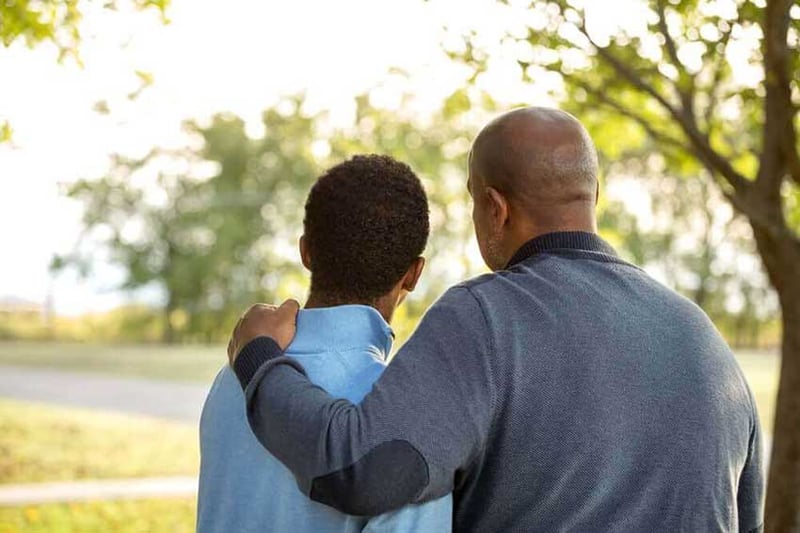5 Signs of Self-Harm in Teens — And How to Get Help

As many as 1 in 4 adolescents have had an episode of self-harm — and the number is only growing. According to one recently released study, for example, the percentage of mental health hospitalizations including self-harm rose 64.2% between 2009 and 2019. The pandemic only threw fuel on the fire of that adolescent mental health crisis. What can parents do to recognize the signs of self-harm and stop it in its tracks? These are the signals to watch out for.
Signs of Self-Harm in Teens: Cutting, Burning, & More
Before you can recognize the warning signs, you must understand what exactly self-harm is. Although cutting is the most common kind of self-harm among teens and adolescents, children in pain may turn to other methods as well. Other forms of self-harm may include:
- Burning
- Scratching
- Punching or hitting oneself
- Ingesting dangerous substances
- Over-exercise
- Food restriction or binging and purging
Self-harm can be hard to understand for people who have never experienced it personally. Inflicting pain on yourself as a solution to pain may seem paradoxical. However, it’s important to understand that self-harm is often an attempt to deal with overwhelming emotions. For someone in a deeply painful emotional state, causing physical injury can provide a precise point to focus on, funneling all of the emotional distress down into that one cut or burn. Of course, self-harm ultimately causes more pain than it soothes, and can have dangerous side effects including accidental death or dismemberment.
Signs of Self-Harm: The Warning Signals
It is crucial to be able to identify the signs of self-harm so that you can intervene, stop the danger, and provide the help needed to solve the underlying emotional pain. Look for these signs of self-harm in your child:
- Unexplained Injuries: Cuts, burns, or bruises can indicate self-harming behaviors, especially if they appear in patterns or on specific body parts. People who are right-handed may have scars on the left side of their body more frequently, and vice-versa for those who are left-handed. Even if your child tries to explain these marks away as accidents, take the time to look deeper and ask more questions.
- Wearing Concealing Clothing: Teens and adolescents who self-harm may attempt to hide their scars or wounds by wearing long sleeves, pants, or other concealing clothing, even in warm weather. Teens may also change their wardrobe in this way in an attempt to cover up drug use or disordered eating.
- Isolation: Withdrawing from social activities, losing interest in hobbies, and avoiding interactions with friends and family can be signs of a self-harm practice.
- Mood Swings: All teens exhibit some emotional volatility, but those struggling with self-harm often experience intense emotional ups and downs. They may exhibit signs of depression, anxiety, irritability, or impulsivity. This may also be a sign of substance use in some teens, and is worth investigating further.
- Self-Harm Tools: Razors, pieces of shattered glass, or shards of plastic can all be used to self-harm. If you find these or blood in your home, it may be a sign of a bigger problem.
Healing Self-Harm from the Inside Out
The wounds of self-harm are the external expression of deep internal pain. In order to heal, teens and adolescents must learn to stop their active self-harm and to heal the emotional wounds that are causing them to self-medicate in this way.
At Stonewater, our residential adolescent treatment program combines evidence-based therapies, experiential activities, and a supportive environment to promote healing and growth. Each resident receives a customized treatment plan tailored to address their specific needs. That may include substance use, mental health challenges, or behavioral health issues like self-harm. Our compassionate team of adolescent experts works closely with each resident and their family to develop strategies for coping with triggers and building resilience to live life successfully. Individual counseling, group therapy sessions, family therapy, cognitive-behavioral therapy (CBT), dialectical behavior therapy (DBT), and mindfulness practices can empower them to navigate life's challenges without resorting to self-harm.
Healing from Self-Harm
Recognizing the signs of self-harm in teens and adolescents is the first step towards healing. The path to recovery unfurls from there. Are you ready to take it? Contact our intake experts today to help your son or daughter heal, and get your child back, better.
 By
By

.jpg)

